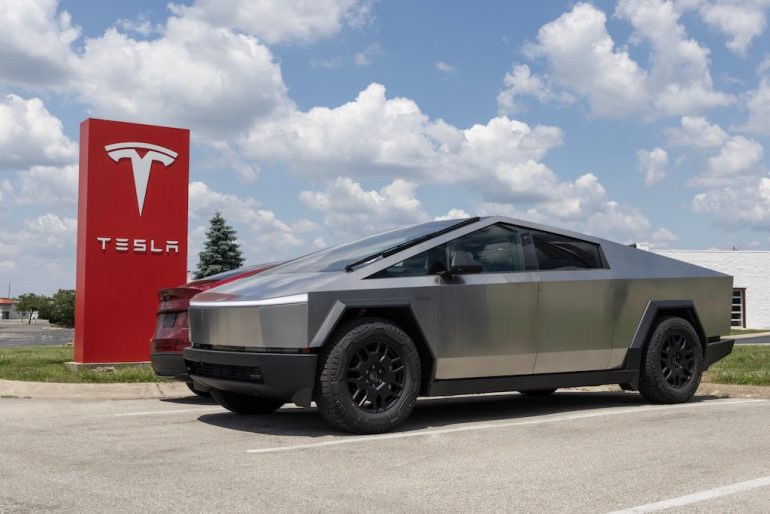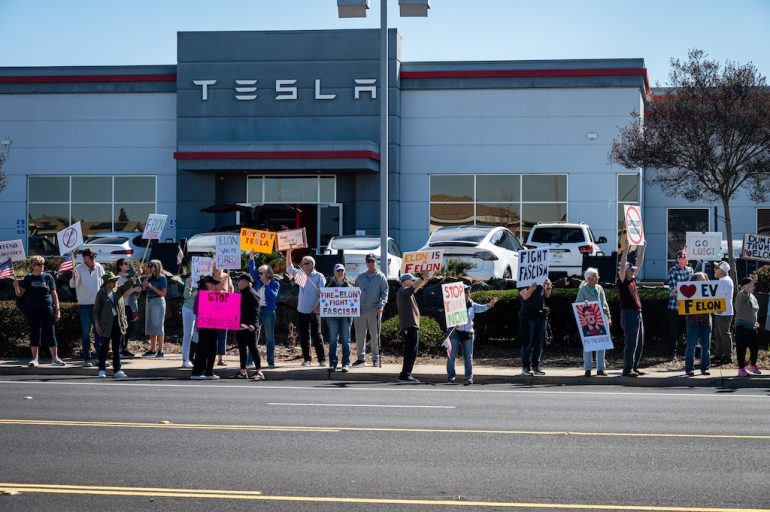Tesla’s Financial Woes

Tesla began 2025 on a rocky note as its financial health dipped significantly, challenging the company’s stronghold in the electric vehicle market. The first quarter saw a sharp 71% decline in net income compared to last year, spotlighting the hurdles Tesla faces in maintaining its lead amidst changing market dynamics.
Financial Breakdown

In Q1 2025, Tesla reported a net income of $409 million from $19.3 billion in revenue, delivering close to 337,000 vehicles. This represents Tesla’s weakest delivery record in two years and marks a year-over-year drop in sales volume. Supporting these numbers were $595 million in sales of zero-emissions tax credits without which Tesla would have faced a loss.
This data points to an alarming trend for a company once highly profitable in comparison to traditional automakers. Just last year, Tesla’s first-quarter profits fell 55% to reach $1.13 billion due to price cuts, but the company stayed profitable through the turbulence. Now, the challenges seem far greater than before, casting doubts on Tesla’s path ahead.
Global Pressures
Tesla has acknowledged the risks brought on by the political climate, which might drag down demand. Reruns of previous tariffs and geopolitical tensions, notably with China, pose potential threats. The company admitted that its energy sector could suffer disproportionately though it avoided precise forecasts.
Furthermore, CEO Elon Musk’s polarizing presence and his recent political stances have stirred brand instability. Historically, Tesla was attractive to early adopters and eco-friendly buyers, but shifting consumer sentiment and Musk’s political ties have possibly discouraged some potential customers.
Upcoming Models
Despite stumbling blocks, Tesla continues to push its future projects, committing to affordable EV models slated for production in early 2025. They are expected to incorporate features of a next-gen platform, even sharing production lines with Model 3 and Model Y.
However, some insider sources hint at possible delays in launching these budget models, raising questions about adherence to public announcements. Tesla has historically dealt with skepticism regarding its ambitious project timelines, and this situation seems no different.
The Cybertruck Bet
Hopes were high that the Cybertruck would rejuvenate interest in Tesla, but its impact has been underwhelming. With the core models looking dated despite minor updates, new initiatives like the Robotaxi and Optimus robot projects are critical for Tesla’s recovery.
Plans for an initial Robotaxi launch in Austin target a mid-year opening, with expansions to follow. However, the service’s feasibility remains unproven—particularly concerning the vehicles’ autonomy—and internal leaks suggest prolonged unprofitability could plague these projects.
Tough Terrain
Fluctuations in profit margins have become a norm for Tesla. After a challenging Q1 in 2024, the next quarter showed a slight recovery with $1.5 billion in profit, though 45% lower than the previous year. Crucially, $890 million in regulatory credit sales padded this recovery, underscoring Tesla’s reliance on ancillary revenue to stay afloat.
Heading into the rest of the year, Tesla stands at a decisive juncture. Facing consumer disinterest, unpredictable trade conditions, and a frantic political backdrop, not to mention having to deliver on grandiose but untested tech promises, will put Tesla’s resilience to the test. Upcoming months are critical, not just for car production but also for Tesla retaining its distinguishing edge in a volatile, competitive market.
Renault Clio Revamp
Nissan's U.S. Plans
F1 Legends' McLarens
Lexus ES Debuts
Porsche Turbo Revamp